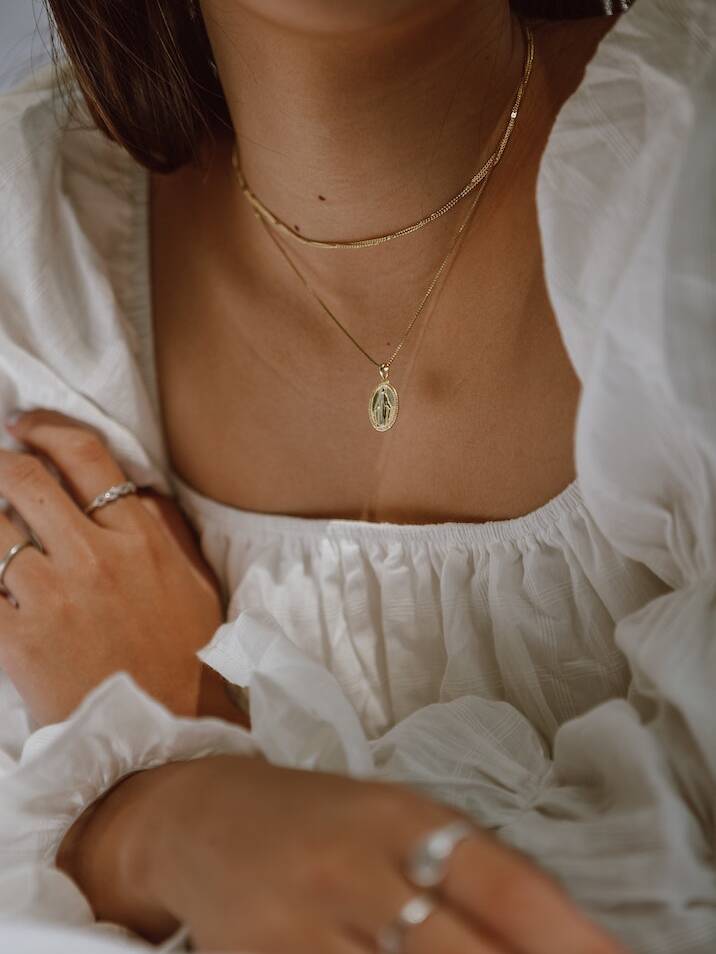Mother’s Day is one of the biggest holidays for the jewelry and watches industry. As consumers look to spoil their moms, jewelry is always a solid gifting choice. At the same time, with every generation, the quest for sustainability strengthens. Since sustainability’s importance is only growing, it’s fitting that sustainable and ethical jewelry brands are rising in popularity.
What is sustainable jewelry?
Soledad Lowe, FGA Gemologist and Jewelry Designer, says, “Sustainable and ethical jewelry considers its lifecycle impact. From the extraction of raw materials until the final disposal, sustainable jewelry will provide environmental, social, and economic benefits while protecting public health and the environment.”
With impact in mind, conscious brands incorporate recycled metals, lab-grown diamonds, or create staple pieces that are made to last. Additionally, they may be certified by third-party certifications that confirm if they pay workers fair wages, source responsibly, uplift the local community, and much more.
Recycled metals
Recycled metals are a fairly common practice for sustainable jewelry brands. Rather than extracting new metals from the ground, upcycled jewelry is made from older, melted-down pieces. “All the metals I use are upcycled. It’s actually an ancient practice within jewelers to save every tiny scrap and reuse it,” tells Soledad. This practice is accessible on a small scale, but Soledad finds it challenging to do with larger producers and factories.
However your jewelry is made, it’s essential to inform your customers. Soledad advises, “Over communicating is not a bad idea in fine jewelry. Consumers like to be reassured in what they are buying.” For example, they want to know if pieces are made with virgin or recycled materials and the materials’ origins.
Lab-grown diamonds
Lab-grown diamonds have the same genetic makeup as mined-diamonds. The difference is that lab-grown diamonds are better for the environment, genuinely conflict-free, and aren’t tied to worker-exploitation.

According to Brilliant Earth, over 1 million diamond miners live in extreme poverty and make less than $1 a day. In some cases, these workers are forced to do this work. Moreover, irresponsible mining has caused soil erosion and deforestation that has forced local communities to relocate.
Staple pieces
Like fast fashion, cheap jewelry is often worn just a handful of times before ending up in a landfill. Thankfully, a shift is happening where conscious consumers are buying with intention. Soledad finds that “consumers don’t want mass-produced jewelry; they want pieces that make them feel unique.” Along with that, purpose-driven shoppers want versatile pieces that can be worn with fancy or casual outfits.
Third-party certifications
The conflict-free certification by Kimberly Process labels diamonds that have not funded rebel movements. However, there are missing parts to this certification process. Brilliant Earth states, “It does not require diamonds to be traced to their mine of origin, allowing smuggled diamonds to obtain conflict free certification and enter world markets.”
Resources like the Responsible Jewelry Council are available to keep producers informed and help those looking to improve their social and environmental impact. They have a more robust certification process that is honored by authentic sustainable and ethical jewelry brands.
How do sustainable jewelry supply chains compare to traditional ones?
Similar to other sustainable supply chains, transparency is at its core. Soledad says, “Ethical jewelers know about the metal and gem miners’ working conditions.” Furthermore, they should know the environmental impact of the chemicals and materials they use. Jewelers can then share this knowledge with conscious consumers.
Soledad continues, “More resources are needed to provide transparency, use eco-friendly alternatives, and assure that jewelers have a respected salary and work environment. To keep prices down and mass produce, mainstream brands might not consider these factors.” Therefore, ethical jewelry companies might increase their price. However, this isn’t always the case when comparing lab-grown versus mined diamonds.

Soledad Lowe Orbit Earring
What are some ethical or environmental issues that the jewelry industry faces?
Soledad tells CADA, “Supply chain transparency is one of the most difficult to achieve because most metals and gems come from the poorest regions of Earth. They pass through multiple hands on their way to market and most without any traceability.”
Jewelry often requires harsh chemicals to make and emits toxic waste. To offset these impacts, “Jewelers around the world continue to innovate jewelry production techniques, pay carbon offsets, and recycle everything that can be recycled.”
The takeaway
Soledad concludes, “As long as consumers continue to ask for sustainable options, responsible jewelry will continue to grow.”
We understand that more and more businesses want to welcome a conscious future. Some are doing so successfully, while others don’t know where to begin. At CADA, we support sustainable and ethical companies wherever they are. Email us at info@cadaconsult.com for more information on how we can support your mission.

